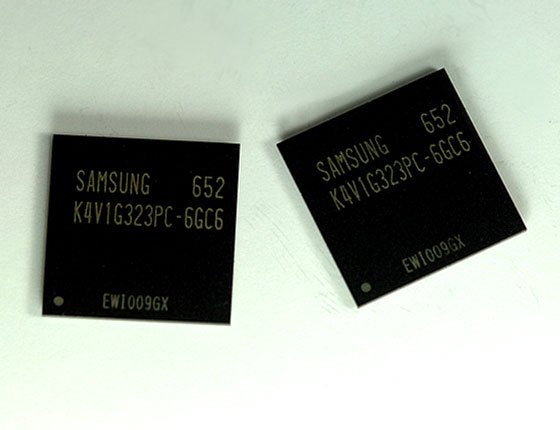DRAM Loses Out in Smartphone Market Growth
According to IHS, DRAM made up only 6.3 percent of the total BOM of a smartphone in Q1 2012, which is down 7.1 points from 13.4 percent during Q1 2011. Phone manufacturers spent an average of $11.81 for DRAM in the first quarter of this year, compared to $19.48 last year. IHS examined 19 different smartphone models for its report.
"Larger demands are being placed on the processing power of smartphones, in the process blurring the line between a phone and a computing device," said Dee Nguyen, memory analyst for IHS. "As this has happened, DRAM has become an increasingly crucial component of the handset supply chain. The growing importance of DRAM, however, appears not to be correspondingly reflected in the total BOM cost of a smartphone given the memory’s declining share."
Interestingly, memory makers are supplying significantly more memory for fewer dollars. IHS said that the average memory amount was 256 MB in Q1 2010, while the average in Q1 2012 was 800 MB. Average selling prices for low-power DDR2 (LPDDR2) DRAM retreated by 48 percent from $2.59 to $1.34 during 2011.
"Because of the extensive application processing requirements of the modern smartphone, handset manufacturers can throttle DRAM loading by only so much before risking lower performance," Nguyen said. "As a result, handset manufacturers will have little choice but to continue moving up the DRAM technology and density curve, which could then enable the memory to take a greater share of total smartphone BOM costs."
Get Tom's Hardware's best news and in-depth reviews, straight to your inbox.

Douglas Perry was a freelance writer for Tom's Hardware covering semiconductors, storage technology, quantum computing, and processor power delivery. He has authored several books and is currently an editor for The Oregonian/OregonLive.
-
A Bad Day ojasSo now phones will come with 2GB min?Reply
I doubt it. There will always be products that have cheaped-out components that barely meet minimal requirements. -
eddieroolz Considering the average phone has somewhere between 512 and 1GB of RAM, the 800MB average sounds right.Reply -
jimmysmitty A Bad DayI doubt it. There will always be products that have cheaped-out components that barely meet minimal requirements.Reply
The US Galaxy SIII will have a dual core Snapdragon CPU and 2GB instead of the quad core and 1GB LPDDR2.
I would probably assume that by next year we will see more phones on the high end with 2GB and low end will push to around 1GB.
It took less than 2 years for PCs to come standard with 4GB of DDR3 since its price just dropped crazy fast. -
tomfreak Do we actually need 2GB of RAM on phones NOW? lolReply
We barely able to fill the 4GB on desktoplet alone phones. I would much prefer them to hit lower minimum price for DRAM save some buck, and drop the phone price further. -
alxianthelast To a lesser extend, consoles are doing the same thing. Taking marketshare from PCs which without a clear justification for upgrades like VR games, aren't getting at least a standard of 16 gigs. :(Reply
I thought by now we'd be up to 32-64 gigs system in something like gigabytes RAM drive, not just super expensive for not as much performance SSDs, and using PCIe 3.0, with 8gigs or more for a discrete GPU. -
alxianthelast TomfreakDo we actually need 2GB of RAM on phones NOW? lolWe barely able to fill the 4GB on desktoplet alone phones. I would much prefer them to hit lower minimum price for DRAM save some buck, and drop the phone price further.Reply
Only because moron Windows, Application developers and game developers STILL continue to piss on x64 programming for windows.
Some games do exceed 32bit memory address and crass because they are so poorly coded. Hopefully more developers like DICE come out an publicly commit to x64 by saying All or some of their dx11 titles will be x64 native.
Going along with your comment though.. it will be interesting to see if any 2D apps on a phone will push the need for phone any phone OS to jump to x64 and then have 4+ gigs of RAM. Will people still be wondering why they need a PC with x64 and 4 gigs if even the phone makers can push those boundaries? -
alxianthelast http://www.technoend.com/arm-64-bit-processors-for-smartphones-servers/Reply
Only a matter of time.. and apps that justify it. -
GreaseMonkey_62 Reply
It would certainly be nice, if at least high end smartphones came with that much RAM. Once Windows RT hit's tablet't they'll need 2GB if not more to run decently.9374534 said:So now phones will come with 2GB min?
